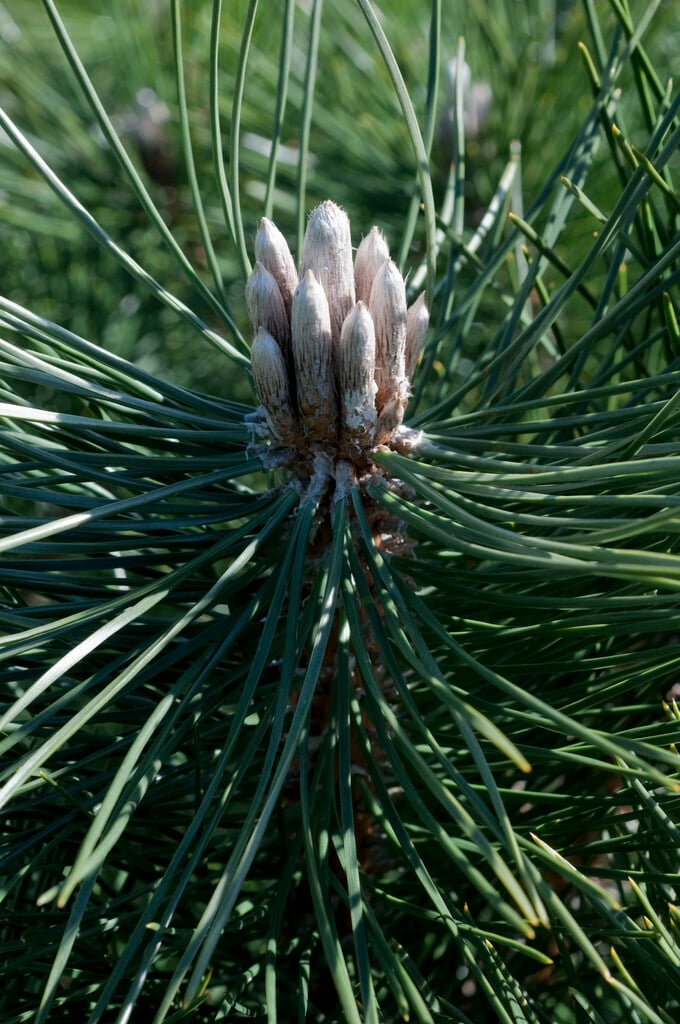Pinus thunbergii
Japanese black pine
A large pyramidal then spreading conifer ultimately reaching around 15m in height. The stiff needles are dark grey-green, 7-12cm and arranged in pairs. The female cones are oval-shaped, 4-7cm long and green-brown.
Size
Ultimate height
Higher than 12 metresTime to ultimate height
20–50 yearsUltimate spread
4–8 metresGrowing conditions
Moisture
Well–drainedpH
Acid, Neutral, AlkalineColour & scent
| Stem | Flower | Foliage | Fruit | |
| Spring | Green | |||
|---|---|---|---|---|
| Summer | Green | |||
| Autumn | Green | |||
| Winter | Green |
Position
- Full sun
Aspect
South–facing or West–facing
Exposure
Exposed or ShelteredDrought resistance
Yes Hardiness
H7Botanical details
- Family
- Pinaceae
- Native to GB / Ireland
- No
- Foliage
- Evergreen
- Habit
- Spreading branched
- Genus
Pinus can be shrubs or large, evergreen trees, some species with attractive bark, developing an irregular outline with age and bearing long needle-like leaves in bundles of 2, 3 or 5; conspicuous cones may fall or remain on the tree for years
- Name status
Correct
How to grow
Cultivation
Grow in any well-drained soil in full sun. Tolerates coastal positions well
Propagation
Propagate by grafting in late winter
Suggested planting locations and garden types
- Architectural
- Coastal
- Low Maintenance
Pruning
No pruning required
Pests
May be susceptible to adelgids, conifer aphid, sawfly larvae, and pine shoot moth
Diseases
May be susceptible to honey fungus and needle cast diseases
Love gardening
Sign up to receive regular gardening tips, inspiration, offers and more
View our Privacy Policy
Get involved
The Royal Horticultural Society is the UK’s leading gardening charity. We aim to enrich everyone’s life through plants, and make the UK a greener and more beautiful place.

